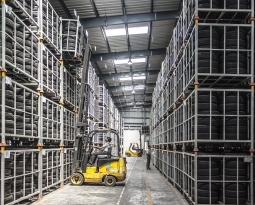Rhode Island Patent of the Month – January 2022
Potable water is a luxury most of us don’t give a second thought. With expanding populations and unpredictable weather conditions, droughts are becoming more common and potable water is becoming more tenuous. As such, many municipalities have implemented new plumbing codes meant to preserve this resource through hot water circulation systems.
Unfortunately, codes and regulations (eg. temperature limits, time limits, and “On Demand” rules) in the industry result in some limitations on the equipment used. The industry has also been leaning towards the use of tankless heaters, which have their own set of regulations that must be met. These ultimately require additional plumbing and space usage.
Regardless of the set up, most still have to wait for hot water. This is because a minimum water flow is required to trigger the water heater. The lukewarm water runs straight from faucet to drain, unused and wasted. But you’re still paying for the water, the energy used, and the sewage fees.
has designed a pump which can be installed in a traditional or tankless set up and improves hot water recirculation. The valve has a thermostatic element that controls both flow and temperature of the hot water at the point of use. The specialized mounting technique allows a minimum flow through the valve when open. This minimum is sufficient to activate a tankless heater. The pump forces the lukewarm water from the hot supply line into the cold supply line. It can even return the lukewarm water to the heater to be reheated. The pump automatically runs 3 times an hour for 2 minutes. It also has a mechanical timer so that the user can set the time they want instant hot water. For instance, if you shower at 6 am every day, the time will ensure hot water is ready at 6 am every day. This solution ensures you have hot water whenever you want without wasting gallons of water as it warms up.
Are you developing new technology for an existing application? Did you know your development work could be eligible for the R&D Tax Credit and you can receive up to 14% back on your expenses? Even if your development isn’t successful your work may still qualify for R&D credits (i.e. you don’t need to have a patent to qualify). To find out more, please contact a Swanson Reed R&D Specialist today or check out our free online eligibility test.
Who We Are:
Swanson Reed is one of the U.S.’ largest Specialist R&D tax advisory firms. We manage all facets of the R&D tax credit program, from claim preparation and audit compliance to claim disputes.
Swanson Reed regularly hosts free webinars and provides free IRS CE and CPE credits for CPAs. For more information please visit us at www.swansonreed.com/webinars or contact your usual Swanson Reed representative.

















